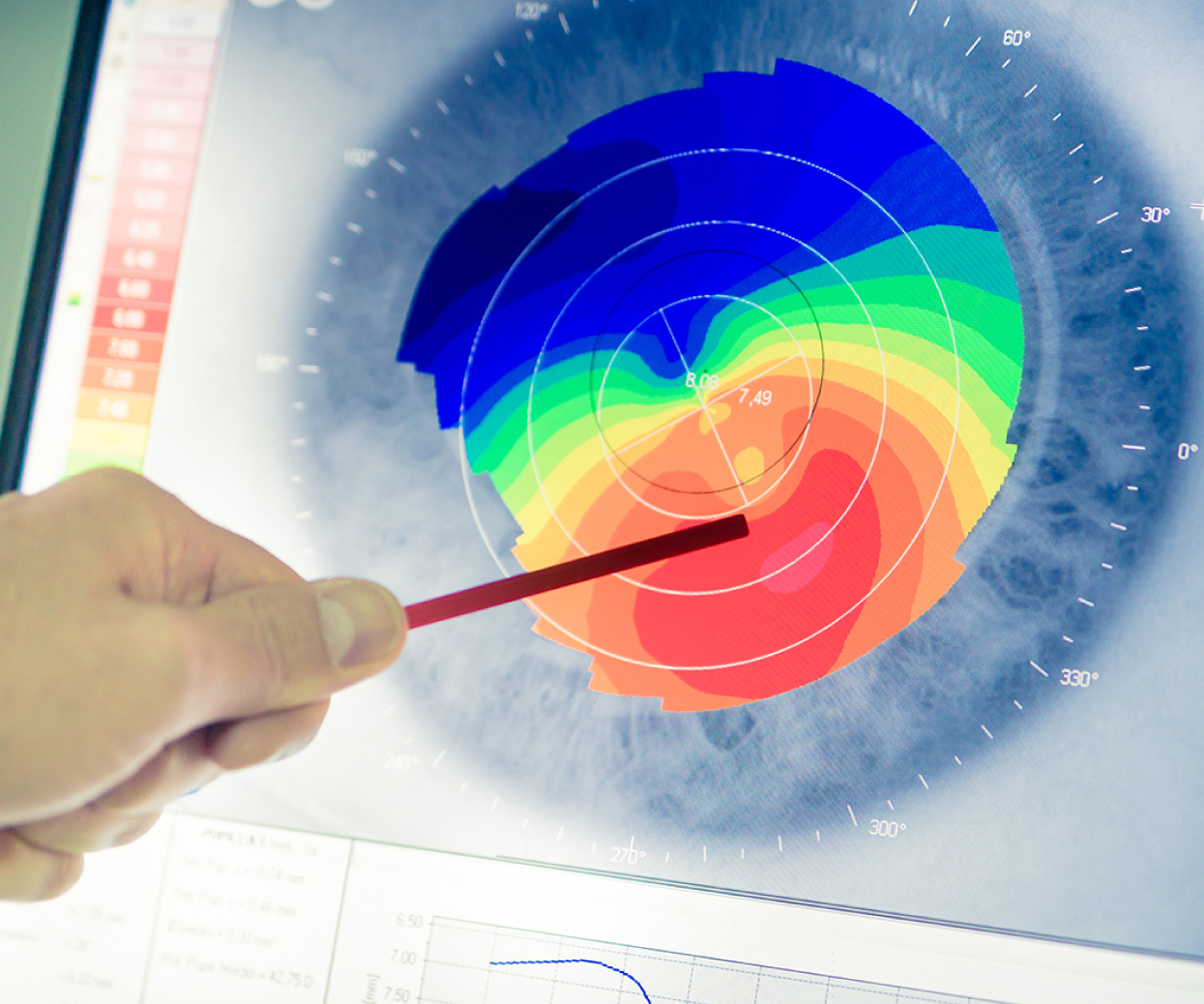
Diagnosis of keratoconus
With the question of Dr. Muhammad Hantira - Honorary Assistant Professor - Ophthalmology Department - Umm Al-Qura University - Saudi Arabia
He explained to us that he diagnoses keratoconus by examining the patient's eye, topographic imaging of the cornea with a pentameter camera, and measuring the thickness of the cornea.
The latest treatment methods for keratoconus
Dr. Hantira explained:
Keratoconus, by its nature, is an increasing disease in which a gradual deterioration occurs over time until the patient reaches the age of forty.
As Dr. Hanatera noted:
The treatment of keratoconus depends on the stage in which the disease was discovered, as the disease progression can be divided into 3 stages:
• The first (simple) stage: in which the vision is good with medical glasses
At this stage, Dr. Hantereh fixes keratoconus until the condition stabilizes so that no further deterioration occurs, as he uses compound drops of riboflavin placed on the surface of the cornea after removing the epithelial cells lining its front surface, and then UV rays are shed at specific doses that lead to an increase The bonds between the collagen fibers and the strengthening of the corneal tissue prevent deterioration for many years after this operation.
• The second (intermediate) stage: during which the patient's vision is not good with medical glasses.
At this stage, Dr. Hanatera implants precise rings inside the corneal cortex using a femtosecond laser, which leads to modifying the curvature and reducing the curvature of the cornea, which leads to a significant improvement in vision in most cases, then we fix the keratoconus with ultraviolet rays and riboflavin so that no deterioration occurs again in some Cases where the thickness of the cornea allows this
• The third (severe) stage: in which previous treatments are not suitable due to the presence of corneal opacities or the presence of a very severe curvature of the cornea.
At this stage, Dr. Hanatera performs a corneal transplant (graft), which are of two types:
• Kidney corneal transplantation, in which the patient's cornea is replaced by a human cornea from a deceased donor in all its layers
• Partial or stratified corneal transplantation, in which the patient's surface layers (suffering from the disease) are replaced while preserving the inner connective cell layer lining the back surface of the cornea, which leads to a reduction in the rate of immune rejection of the transplanted cornea.
Contact lenses for treating keratoconus
With the question of Dr. Muhammad Hantira, an honorary assistant professor, ophthalmology department, Umm Al-Qura University, Saudi Arabia
He explained to us a number of contact lenses used in the treatment of keratoconus, including:
• Special soft contact lenses
Recently, contact lens manufacturers have started offering special contact lenses specifically designed to correct mild and moderate cases of keratoconus.
These lenses are manufactured based on detailed eye measurements of a person with keratoconus and may be more comfortable than gas permeable contact lenses or hybrid contact lenses for some people.
Dr. Hantereh noted:
Some recent studies have shown the optical performance of special contact lenses in the form of a round protrusion and rigid contact lenses that are permeable to gases to correct mild cases of keratoconus.
Rigid gas permeable lenses achieve better visual acuity in lower contrast situations and special contact lenses in the shape of the round notch work better for higher contrast situations.
Special contact lenses in the shape of a round bump are significantly more expensive than regular contact lenses.
• Permeable contact lenses
Dr. Hantira explained:
In the event that the usual contact lenses and eyeglasses are unable to control keratoconus, then gas permeable contact lenses are the appropriate treatment. Gas permeable lenses are attached to the cornea of the eye, replacing its irregular shape with a smooth and refractive surface to improve vision.
That he should expect frequent follow-up visits in the clinic in order to be able to check the fixation of the lenses, especially in the case of continuing progression of the condition of keratoconus.
Attaching contact lenses to keratoconus eyes is often a difficult and time-consuming job. As Dr. Hantira explained:
